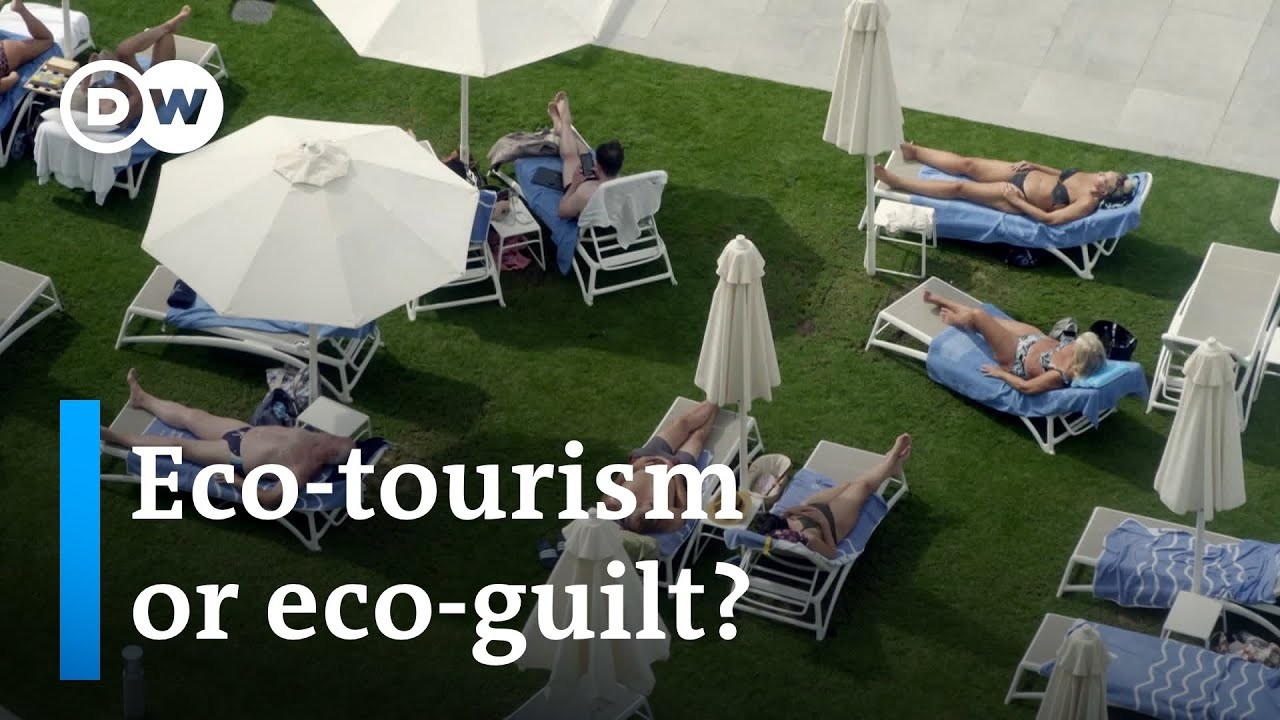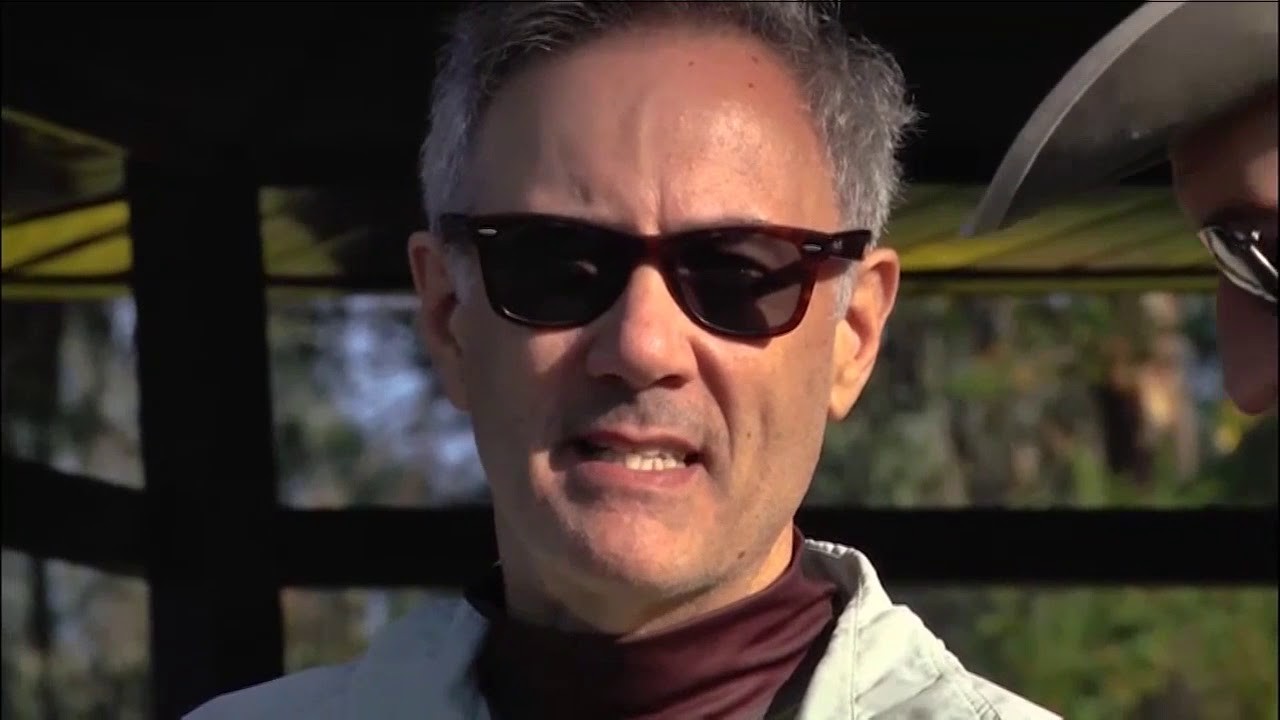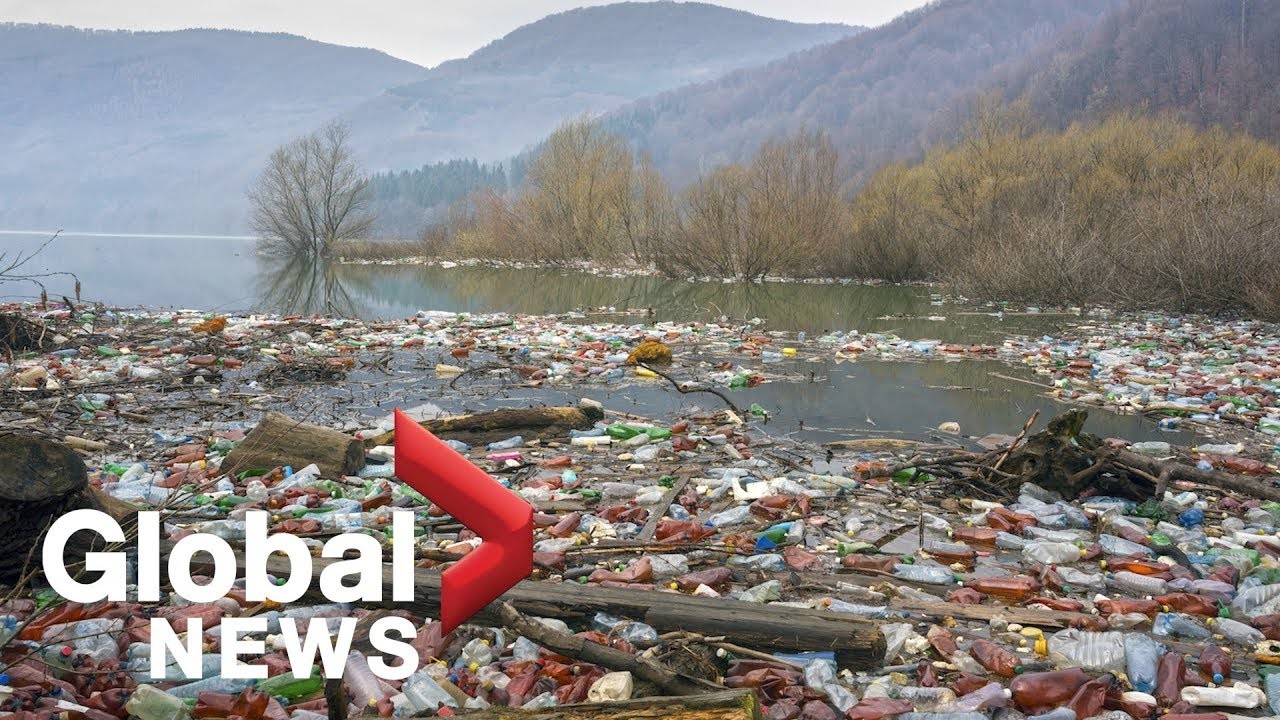Tourism plays a vital role in the global economy, but its impact on the environment is a complex issue. SIXT.VN understands this delicate balance and aims to provide sustainable travel options for exploring the beauty of Vietnam. By understanding the environmental impact of tourism and adopting responsible practices, we can preserve natural resources for future generations. Let’s delve into the positive and negative impacts of tourism, explore sustainable solutions, and highlight the role of responsible travel.
1. What Is the Impact of Tourism on the Environment?
Tourism significantly influences the environment, presenting both advantages and disadvantages. While it can foster environmental awareness and provide funding for conservation, the industry can also lead to habitat destruction, pollution, and increased carbon emissions. Mass tourism can strain natural resources and damage ecosystems.
-
Positive Impacts:
- Conservation Funding: Tourism revenue can be directed towards protecting natural parks and wildlife reserves.
- Environmental Awareness: Tourism can raise awareness among travelers and local communities about the importance of environmental conservation.
-
Negative Impacts:
- Habitat Destruction: Infrastructure development like hotels and roads can lead to deforestation and disrupt ecosystems.
- Pollution: Increased waste and emissions from transportation and accommodation can pollute air and water resources.
- Resource Depletion: High water and energy consumption can strain local resources.
 Tourist boat on Halong Bay, Vietnam, highlighting both the beauty of the destination and the potential environmental impact of tourism.
Tourist boat on Halong Bay, Vietnam, highlighting both the beauty of the destination and the potential environmental impact of tourism.
2. How Does Tourism Negatively Impact the Environment?
Tourism’s negative impacts range from habitat destruction to pollution. SIXT.VN recognizes these challenges and is committed to promoting sustainable tourism practices in Vietnam.
2.1. What Is the Harm to the Natural Environment From Tourism?
Tourism infrastructure like hotels and resorts can lead to deforestation and habitat loss. Bali, for example, has seen its beaches impacted by sprawling resorts, affecting marine life and accelerating shoreline erosion. According to a study by the United Nations Environment Programme (UNEP), unsustainable tourism practices can lead to the degradation of natural environments, threatening biodiversity and ecosystem services.
2.2. Why Are Waste Management Issues a Concern in the Tourism Industry?
Many popular destinations struggle with waste management due to increased tourist numbers. Mount Everest is a prime example, often referred to as the “world’s highest garbage dump,” littered with discarded equipment and waste. This uncontrolled waste contaminates water sources and spoils landscapes.
2.3. How Does Tourism Lead to Water Scarcity?
Tourism puts immense pressure on freshwater resources. Hotels, resorts, and recreational activities consume vast amounts of water, leading to scarcity in tourist-heavy regions. Golf courses, especially in arid areas, contribute significantly to this issue. Santorini in Greece has experienced significant depletion of freshwater reserves, forcing them to import water or rely on desalination.
2.4. What Role Do Noise and Light Pollution Play in the Negative Environmental Effects of Tourism?
The constant noise from boats, vehicles, and human activity disturbs wildlife, affecting their natural behaviors and breeding patterns. Sea turtles, for example, can be disoriented by bright lights from beachfront properties, hindering their survival.
2.5. What Is the Impact of Invasive Species Introduced by Tourism?
The introduction of non-native species through transported goods or tourist attractions can disrupt the ecological balance. In the Galápagos Islands, introduced species like goats and rats have harmed the local flora and fauna, requiring expensive eradication programs.
 Scenic view of rice terraces in Sapa, Vietnam, showcasing the natural beauty that attracts tourists and the need for responsible environmental practices.
Scenic view of rice terraces in Sapa, Vietnam, showcasing the natural beauty that attracts tourists and the need for responsible environmental practices.
3. How Does Tourism Contribute to Climate Change?
Tourism is a major contributor to climate change due to air travel, energy consumption, and reliance on non-renewable resources. SIXT.VN aims to minimize its carbon footprint by promoting eco-friendly transportation options and supporting sustainable accommodations.
3.1. How Do Air Travel Emissions Affect the Environment?
Aviation contributes significantly to global carbon emissions. Air travel accounts for 52% of all direct emissions from tourism, making it the largest single contributor to the sector’s carbon footprint. While airlines promote sustainability, these efforts often fall short due to lobbying and limited use of sustainable fuels.
3.2. Why Is Increased Energy Consumption a Concern in Tourism?
Hotels and resorts consume vast amounts of energy for heating, cooling, and lighting. Accommodation-related energy use contributes to 34% of indirect CO2 emissions. Luxury facilities with amenities like heated pools and air-conditioned rooms exacerbate this issue.
3.3. How Does Transport Within Destinations Contribute to Climate Change?
Tourists often use cars, buses, and boats for local transportation, emitting greenhouse gases. Rental car services and tour buses significantly increase the carbon footprint of a vacation. SIXT.VN offers eco-friendly transportation options to reduce this impact.
3.4. What Is the Environmental Impact of Cruise Ship Emissions?
Cruise ships consume massive amounts of fossil fuels, emitting CO2 and other pollutants into the air and ocean. The largest cruise ships have doubled in size since 2000, contributing to a significant increase in CO2 emissions. More effective regulations are needed in the cruise industry.
3.5. Why Is Over-Reliance on Non-Renewable Resources a Problem in Tourism?
Many tourist hotspots have yet to transition to renewable energy sources, relying on coal, oil, and gas for power generation, further exacerbating greenhouse gas emissions. This dependency increases the carbon footprint of tourism.
3.6. How Does Food Production and Consumption Contribute to Climate Change?
Tourist destinations often need to import food, leading to transportation emissions. The preference for non-local foods also increases the carbon footprint. Supporting local agriculture can help reduce these emissions.
3.7. How Does Land Use and Carbon Sequestration Affect Tourism’s Environmental Impact?
The construction of tourist facilities leads to deforestation and soil erosion, resulting in the loss of wildlife habitats and reduced carbon sequestration capacity. Forests play a crucial role in absorbing and storing carbon dioxide.
 Aerial view of a luxury resort in Phu Quoc, Vietnam, raising questions about sustainable development and environmental impact.
Aerial view of a luxury resort in Phu Quoc, Vietnam, raising questions about sustainable development and environmental impact.
4. Are There Any Benefits to Tourism?
Despite its negative impacts, tourism is crucial for many economies and can support conservation efforts. SIXT.VN recognizes the importance of balancing economic benefits with environmental responsibility.
4.1. How Does Tourism Benefit Local Economies?
Tourism is a primary source of income for many countries. For those with limited industrial or agricultural potential, their natural or cultural heritage can become their most lucrative asset. It creates jobs and supports local businesses.
4.2. How Does Tourism Contribute to Conservation Efforts?
Revenue generated from tourism can fund conservation efforts. In Kenya, for example, national parks and reserves protect iconic wildlife and generate substantial revenue. This revenue goes back into conservation, ensuring a sustainable cycle and protecting against poaching.
4.3. How Does Tourism Promote Environmental Awareness and Education?
Visitors often return home with heightened environmental and cultural consciousness, leading to global advocacy, funding, and support for preservation efforts. This increased awareness can drive positive change in environmental practices.
4.4. How Does Tourism Provide Alternative Livelihoods for Local Communities?
Responsible tourism creates jobs for local communities, offering an alternative to activities that harm the environment, such as logging or mining. Training and jobs related to tourism provide sustainable income without depleting the environment.
 Sea turtles swimming in the ocean in Con Dao, Vietnam, highlighting the need for conservation efforts to protect endangered species.
Sea turtles swimming in the ocean in Con Dao, Vietnam, highlighting the need for conservation efforts to protect endangered species.
5. What Is the Relationship Between Tourism and Climate Change?
The relationship between tourism and climate change is complex. While sustainable travel options are increasing, air travel remains a significant hurdle. Remote or island locales rely almost exclusively on air travel for tourism, which is their economic lifeline.
5.1. How Does Air Travel Impact Remote Destinations?
Many destinations, particularly remote or island locales like the Maldives, Fiji, and the Caribbean islands, depend heavily on tourist inflows for their economic stability. Revenue from tourism funds essential services and infrastructure projects.
5.2. How Does Climate Change Threaten These Destinations?
Paradoxically, these destinations are among the most vulnerable to the impacts of climate change. Rising sea levels threaten to submerge island nations, and changing weather patterns disrupt the delicate balance of their ecosystems.
5.3. How Can This Dilemma Be Addressed?
The world grapples with balancing economic needs with environmental responsibility. Innovation in sustainable travel and a global perspective are necessary to address this issue.
 Woman holding a fern in a forest in Cuc Phuong National Park, Vietnam, symbolizing sustainable tourism and eco-friendly practices.
Woman holding a fern in a forest in Cuc Phuong National Park, Vietnam, symbolizing sustainable tourism and eco-friendly practices.
6. What Is the Future of Tourism?
The future of tourism requires a transition towards sustainability. The industry must preserve the planet while allowing people to explore its wonders.
6.1. How Can Eco-Tourism and Responsible Travel Contribute to a Sustainable Future?
Eco-tourism emphasizes responsible travel to natural areas that conserve the environment and sustain local people. Destinations like Costa Rica have successfully marketed themselves as eco-friendly hotspots, contributing to conservation efforts.
6.2. How Can Renewable Energy and Green Infrastructure Improve Tourism’s Environmental Impact?
Investing in renewable energy and green infrastructure is crucial. Hotels and resorts are adopting solar and wind power, reducing water usage, and implementing waste reduction strategies. Cities like Copenhagen have pioneered green urban tourism with bike-sharing programs and energy-efficient public transportation.
6.3. What Role Do Carbon Offsetting and Eco-Friendly Transportation Play?
Carbon offsetting programs offer a way for travelers to mitigate their impact. Airlines and travel agencies are offering carbon offset options. The promotion of eco-friendly transportation alternatives, such as electric vehicles and high-speed trains, is also gaining momentum.
6.4. How Does Conservation and Community-Based Tourism (CBT) Contribute to Sustainability?
CBT empowers local communities by involving them directly in the tourism industry. This ensures that economic benefits are distributed fairly and that cultural and environmental integrity is maintained. In Bhutan, visitors pay a sustainable development fee that contributes to conservation and cultural preservation efforts.
 Scenic view of Ha Long Bay, Vietnam, urging tourists to embrace sustainable travel practices to preserve natural wonders.
Scenic view of Ha Long Bay, Vietnam, urging tourists to embrace sustainable travel practices to preserve natural wonders.
7. How Can Individuals Reduce Their Environmental Impact When Traveling?
Individuals can minimize their carbon footprint by adopting eco-friendly practices. Sustainable travel involves planning ahead and being mindful of the consequences of your actions.
| Action | Description |
|---|---|
| Choose Eco-Friendly Accommodations | Opt for hotels with strong environmental practices, such as energy efficiency and waste reduction. Look for certifications like LEED or Green Key. |
| Travel Light | Pack only what you need to reduce fuel consumption during transportation. |
| Offset Your Carbon Emissions | Use carbon offset programs to compensate for emissions generated by your flights or transportation. |
| Use Public Transportation | Use public transportation, walk, or cycle instead of renting a car. |
| Support Local Businesses | Spend money at locally-owned businesses to support the local economy and reduce the environmental impact of transporting goods over long distances. |
| Reduce Waste | Carry a reusable water bottle, shopping bag, and utensils to minimize single-use plastic waste. |
| Respect Local Wildlife | Avoid activities that exploit animals and support ethical wildlife tours. |
| Be Energy Conscious | Turn off lights and air conditioning when not in use and conserve water and energy. |
| Avoid Over-Tourism Hotspots | Explore less popular destinations to reduce the environmental strain on popular sites and offer a more unique travel experience. |
| Educate Yourself and Others | Learn about the environmental impact of your travel choices and share this knowledge with others. |
 Tourist hiking in Cat Ba National Park, Vietnam, promoting responsible tourism and minimizing environmental impact.
Tourist hiking in Cat Ba National Park, Vietnam, promoting responsible tourism and minimizing environmental impact.
8. How Can Stakeholders Contribute to Sustainable Tourism?
The future of tourism depends on the collective efforts of governments, businesses, communities, and travelers. Policymakers must implement regulations that incentivize sustainable practices.
8.1. What Is the Role of Policymakers?
Policymakers must implement regulations that incentivize sustainable practices, such as carbon taxes on flights and stricter environmental standards for tourism operators.
8.2. How Can Businesses in the Tourism Industry Contribute?
Businesses must commit to sustainability as a core operational principle, not just a marketing strategy. Investing in green infrastructure and promoting responsible travel practices are essential.
8.3. How Can Local Communities Be Empowered?
Local communities should be empowered to manage tourism in ways that benefit them economically while preserving their cultural and natural heritage.
8.4. What Role Do Travelers Play in Sustainable Tourism?
Travelers must embrace a mindset of responsibility, understanding that every journey has an impact and making choices that minimize harm to the environment.
 View of Hoi An ancient town, Vietnam, showcasing cultural heritage and the importance of responsible tourism to preserve historical sites.
View of Hoi An ancient town, Vietnam, showcasing cultural heritage and the importance of responsible tourism to preserve historical sites.
9. How Can Greenly Help Businesses Promote Sustainable Tourism?
Greenly provides comprehensive carbon management solutions to help businesses lead the way in sustainable tourism.
9.1. How Does Greenly Measure GHG Emissions?
Greenly tracks Scope 1, 2, and 3 emissions using advanced tools and technology, providing a full picture of your greenhouse gas footprint. This ensures targeted and effective actions to reduce emissions.
9.2. How Does Greenly Create Custom Action Plans?
Greenly’s climate experts develop tailored strategies focused on key areas for improvement, helping businesses identify high-impact actions that reduce emissions and drive sustainable growth.
9.3. How Does Greenly Help Decarbonize Your Supply Chain?
Greenly helps engage suppliers, transition to low-carbon options, and build more sustainable partnerships. This increases transparency and reduces emissions throughout your supply chain.
9.4. What Are the Benefits of Greenly’s Intuitive Platform?
Greenly’s user-friendly platform simplifies calculating and monitoring your carbon footprint. It provides a seamless experience for managing your environmental impact and tracking progress against ESG goals.
9.5. Why Should You Choose Greenly?
Greenly provides comprehensive support throughout your sustainability journey, from carbon measurement to supply chain decarbonization. Partnering with Greenly allows your business to significantly reduce its environmental impact and meet net-zero targets.
10. Frequently Asked Questions (FAQs) About Tourism and the Environment
10.1. Is tourism always bad for the environment?
No, tourism can have both positive and negative impacts. While it can lead to environmental degradation, it can also fund conservation efforts and promote environmental awareness.
10.2. What are the main environmental impacts of tourism?
The main impacts include habitat destruction, pollution, resource depletion, and contribution to climate change through emissions from transportation and energy consumption.
10.3. How does air travel contribute to the environmental impact of tourism?
Air travel is a significant contributor to carbon emissions, accounting for a large portion of the tourism sector’s carbon footprint.
10.4. What is eco-tourism, and how does it help?
Eco-tourism is responsible travel to natural areas that conserves the environment, sustains local people, and involves understanding and education. It helps minimize the negative impacts of tourism.
10.5. How can I travel more sustainably?
You can travel more sustainably by choosing eco-friendly accommodations, using public transportation, supporting local businesses, reducing waste, and offsetting your carbon emissions.
10.6. What is community-based tourism (CBT)?
CBT involves local communities directly in the tourism industry, ensuring that economic benefits are distributed fairly and that cultural and environmental integrity is maintained.
10.7. What role do governments play in promoting sustainable tourism?
Governments can implement regulations that incentivize sustainable practices, such as carbon taxes on flights and stricter environmental standards for tourism operators.
10.8. How can businesses in the tourism industry become more sustainable?
Businesses can invest in renewable energy, reduce water usage, implement waste reduction strategies, and promote eco-friendly transportation options.
10.9. What is carbon offsetting, and how does it work?
Carbon offsetting involves investing in environmental projects that reduce greenhouse gases to compensate for your own emissions.
10.10. How can Greenly help businesses become more sustainable?
Greenly provides comprehensive carbon management solutions, including measuring emissions, creating custom action plans, decarbonizing supply chains, and providing an intuitive platform for managing environmental impact.
SIXT.VN is committed to providing sustainable travel options for exploring Vietnam. We encourage travelers to consider the environmental impact of their choices and to support responsible tourism practices. Contact us today to plan your eco-friendly adventure:
- Address: 260 Cau Giay, Hanoi, Vietnam
- Hotline/Whatsapp: +84 986 244 358
- Website: SIXT.VN



